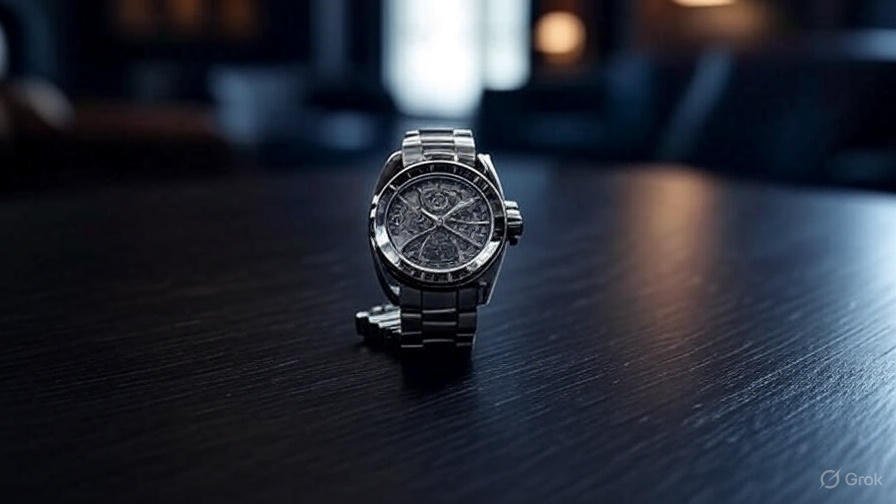A Growing Trend in Luxury Watch Replicas
The luxury watch market has always been a symbol of prestige, craftsmanship, and innovation. Among the leading brands, Omega stands out with its rich history dating back to 1848, known for iconic models like the Speedmaster and Seamaster. However, in recent years, a parallel market has gained significant traction: the world of Omega Replica watches. In 2025, this trend has reached new heights, driven by advancements in replica manufacturing and shifting consumer preferences.
Recent developments in the replica watch industry have sparked conversations among collectors, enthusiasts, and industry experts. High-quality Omega replicas, often referred to as “super clones,” are now so sophisticated that they closely mimic the design, materials, and even functionality of authentic Omega timepieces. This surge has raised questions about craftsmanship, ethics, and the future of luxury watchmaking.
Advancements in Replica Technology
The replica watch industry has evolved dramatically over the past decade. Unlike the poorly made knockoffs of the early 2000s, modern Omega replicas are crafted with remarkable precision. Manufacturers have invested heavily in replicating the intricate details of Omega’s designs, from the stainless steel cases to the sapphire crystal faces. Some replicas even incorporate clone movements that emulate the performance of Omega’s proprietary calibers, such as the 8800 series used in the Seamaster Diver 300m.
For instance, recent releases of Omega Seamaster Diver 300m replicas feature stainless steel cases with mesh bracelets and high-quality lume on dials and hands, offering legibility in low-light conditions that rivals genuine models.
These advancements have made it increasingly difficult for even seasoned collectors to distinguish replicas from authentic watches at a glance. The use of materials like ceramic bezels and Swiss-grade clone movements has elevated the quality, making these timepieces appealing to those seeking luxury aesthetics at a fraction of the cost. Learn more about these advancements at Omega Replica.
Market Dynamics and Consumer Appeal
The rise of Omega replicas is closely tied to economic factors. Authentic Omega watches, such as the Speedmaster Professional or the Seamaster Planet Ocean, often carry price tags ranging from $5,000 to over $10,000. For many, this represents a significant financial commitment. Replicas, on the other hand, are available for a fraction of the price, often ranging from $200 to $1,000, depending on the quality and craftsmanship.
According to industry observers, the demand for replicas has surged in 2025, particularly for models tied to cultural phenomena. For example, the Omega Seamaster No Time to Die 007 Edition, inspired by the James Bond franchise, has seen a spike in replica sales due to its iconic status and sleek titanium design. This trend reflects a broader appeal among younger consumers who value the aesthetics of luxury watches but prioritize affordability.
However, the growing popularity of replicas has sparked debates about their impact on the luxury watch industry. While some view replicas as a gateway to appreciating fine horology, others argue that they undermine the value of authentic craftsmanship and brand heritage.
Ethical and Legal Considerations
The production and sale of replica watches operate in a legal gray area. While owning a replica watch is generally not illegal, manufacturing and selling counterfeit goods infringe on intellectual property laws in many countries. Omega, like other luxury brands, invests heavily in research, development, and marketing to maintain its reputation. Replicas, by replicating these designs, can dilute brand value and harm the industry’s innovation-driven ecosystem.
Ethically, the replica market raises questions about consumer responsibility. By purchasing a replica, consumers may inadvertently support manufacturers who bypass labor and environmental regulations. Additionally, the quality of replicas can vary widely. While high-end super clones use quality materials, lower-end replicas often suffer from poor durability, leading to dissatisfaction among buyers.
Industry experts suggest that consumers weigh the long-term value of investing in an authentic watch versus the short-term savings of a replica, considering both ethical implications and personal satisfaction.
The Cultural Significance of Omega Watches
Omega’s legacy is deeply intertwined with cultural milestones. The Speedmaster, famously worn by astronauts during the Apollo missions, earned the nickname “Moonwatch.” Similarly, the Seamaster has become synonymous with adventure and elegance, thanks to its association with the James Bond franchise. These cultural connections have fueled interest in both authentic and replica versions of these models.
In 2025, Omega continues to innovate, with new releases like the Speedmaster Moonphase Meteorite gaining attention for their unique design and craftsmanship. However, the accessibility of replicas has allowed a broader audience to engage with these iconic designs, even if they don’t own the genuine article. This democratization of luxury aesthetics has sparked discussions about inclusivity in the watch community.
The Future of Omega Replicas
As technology continues to advance, the line between authentic and replica watches may blur further. Manufacturers of high-quality replicas are likely to refine their techniques, potentially incorporating smartwatch features or even more precise movements. This could challenge luxury brands like Omega to differentiate themselves through exclusive materials, limited-edition releases, or enhanced brand experiences.
For consumers, the decision to purchase a replica or an authentic Omega watch will depend on personal values, budget, and appreciation for horology. While replicas offer an affordable entry point, authentic watches carry the weight of heritage, craftsmanship, and investment potential. Industry analysts predict that the replica market will continue to grow, but luxury brands will adapt by emphasizing authenticity and storytelling to maintain their allure.
Conclusion
The surge of Omega replica watches in 2025 reflects a fascinating intersection of technology, consumer culture, and luxury. While replicas offer an accessible way to enjoy the aesthetics of iconic timepieces, they also raise important questions about ethics, craftsmanship, and brand value. As the watch industry evolves, both manufacturers and consumers will need to navigate this complex landscape, balancing affordability with the timeless appeal of authentic horology.
For those considering a replica, the advice is clear: research thoroughly, prioritize quality, and reflect on the broader implications of your purchase. Whether you choose a replica or an authentic Omega, the love for fine timepieces continues to unite enthusiasts worldwide.
